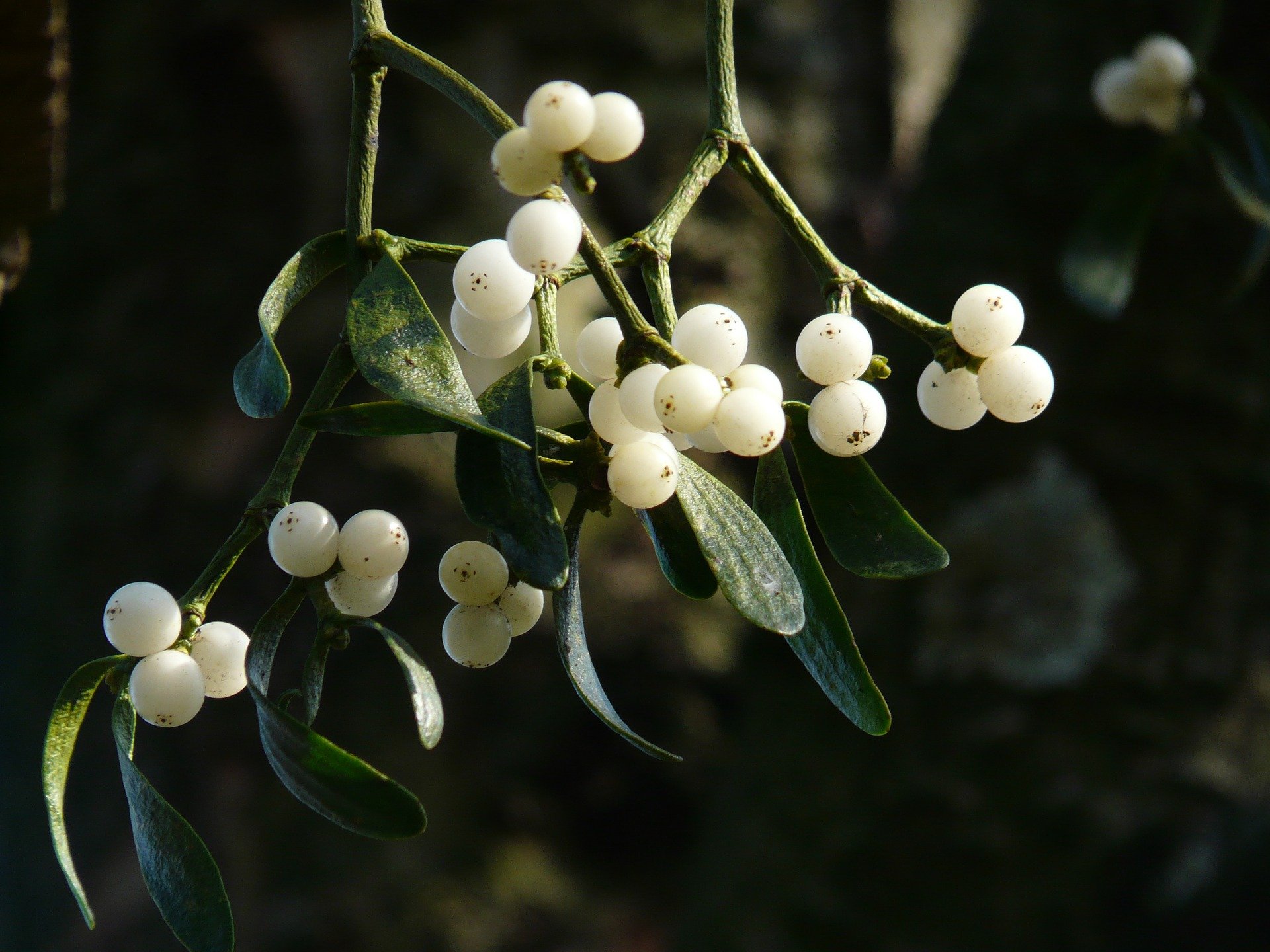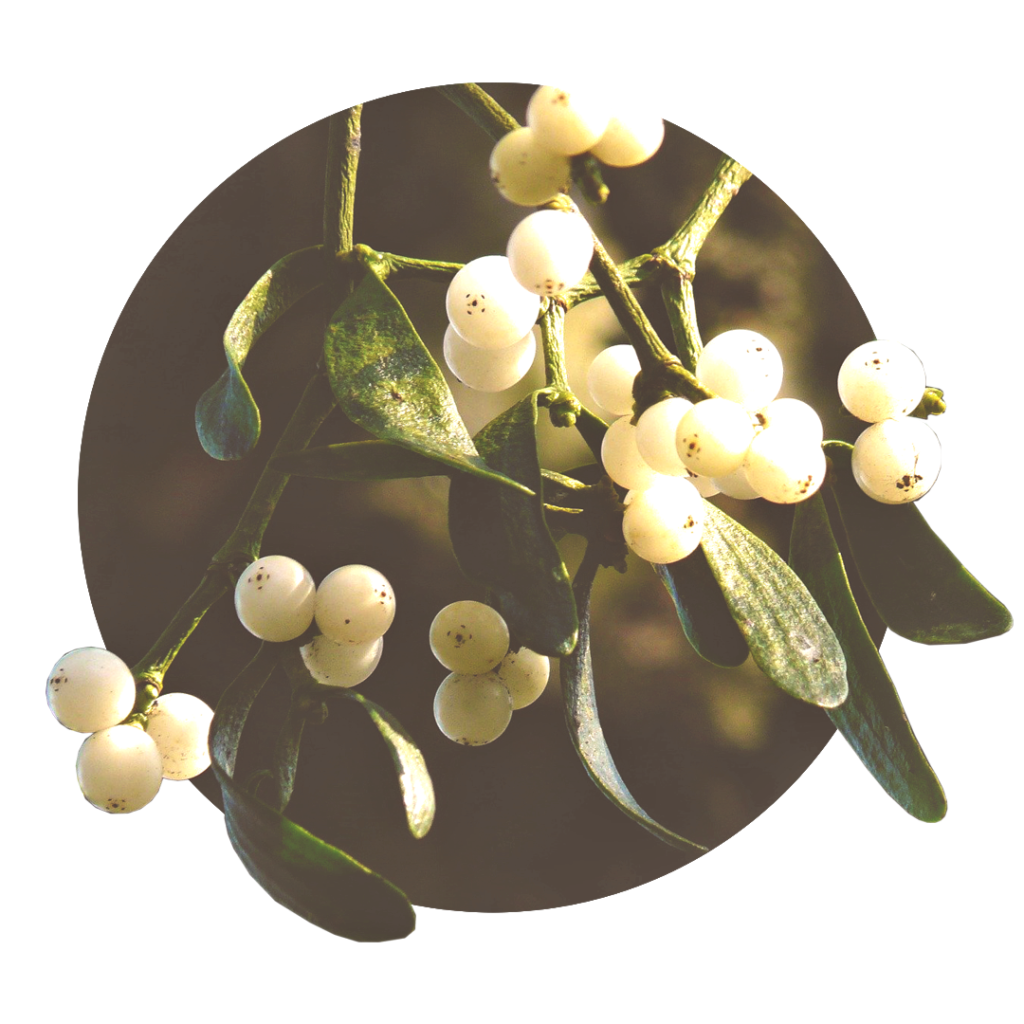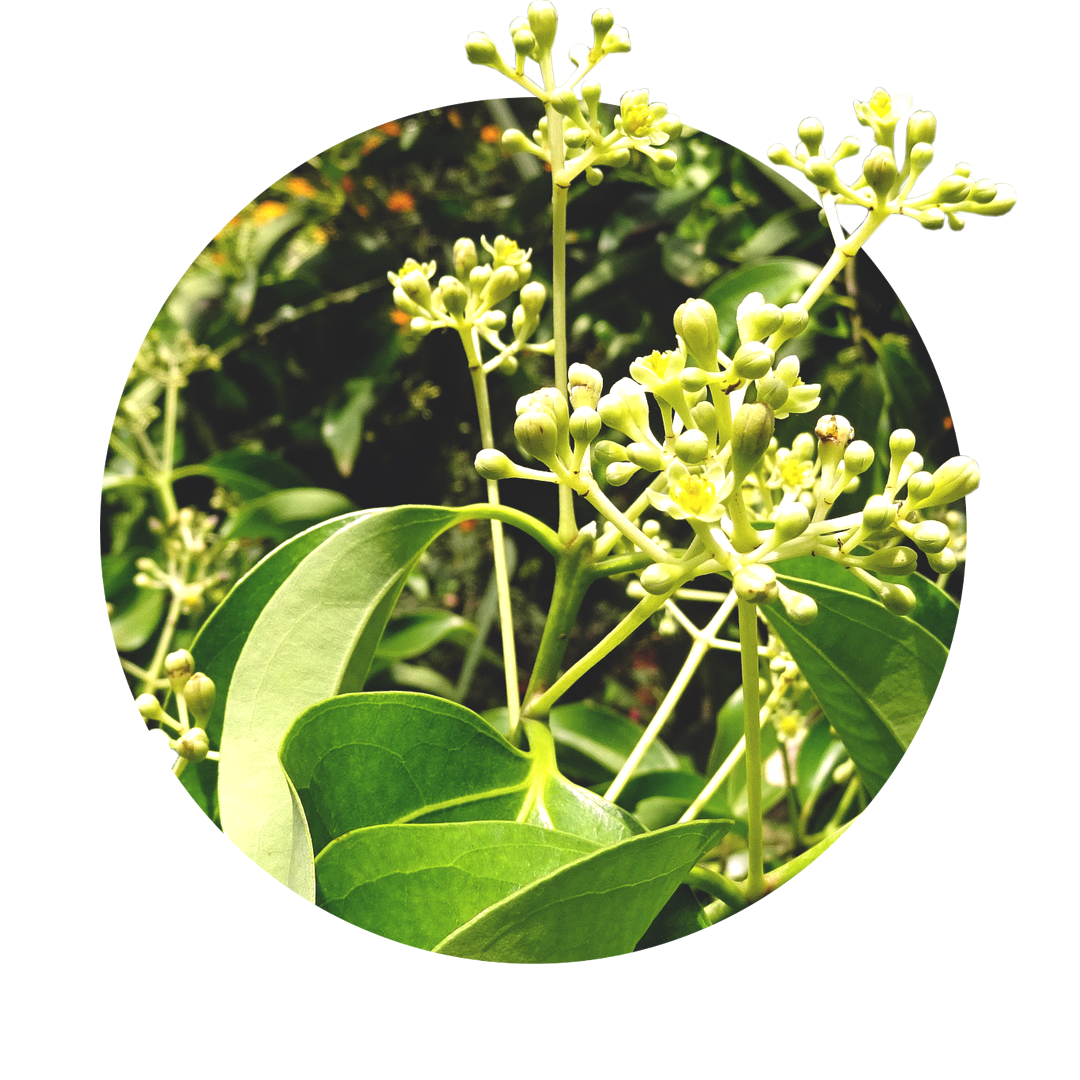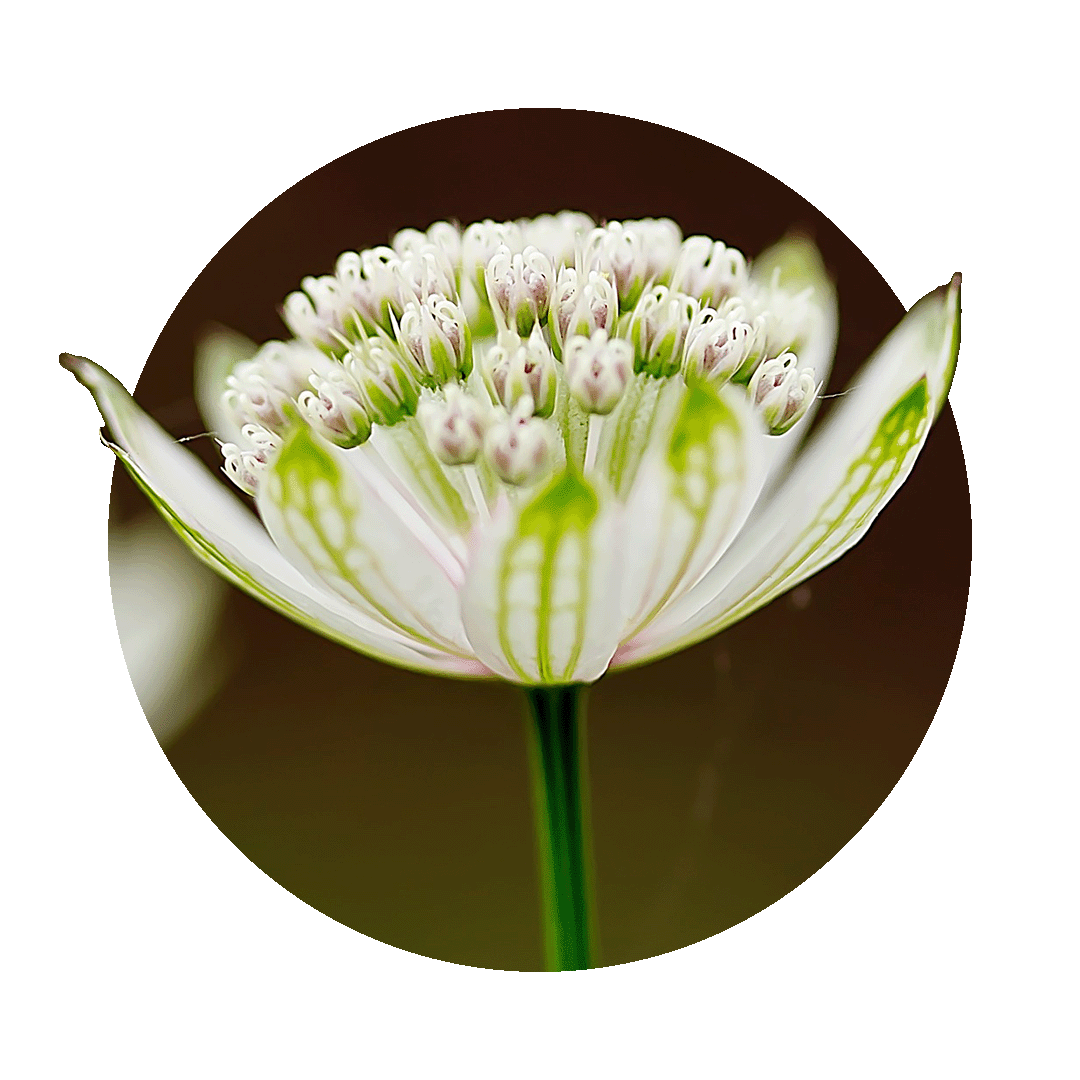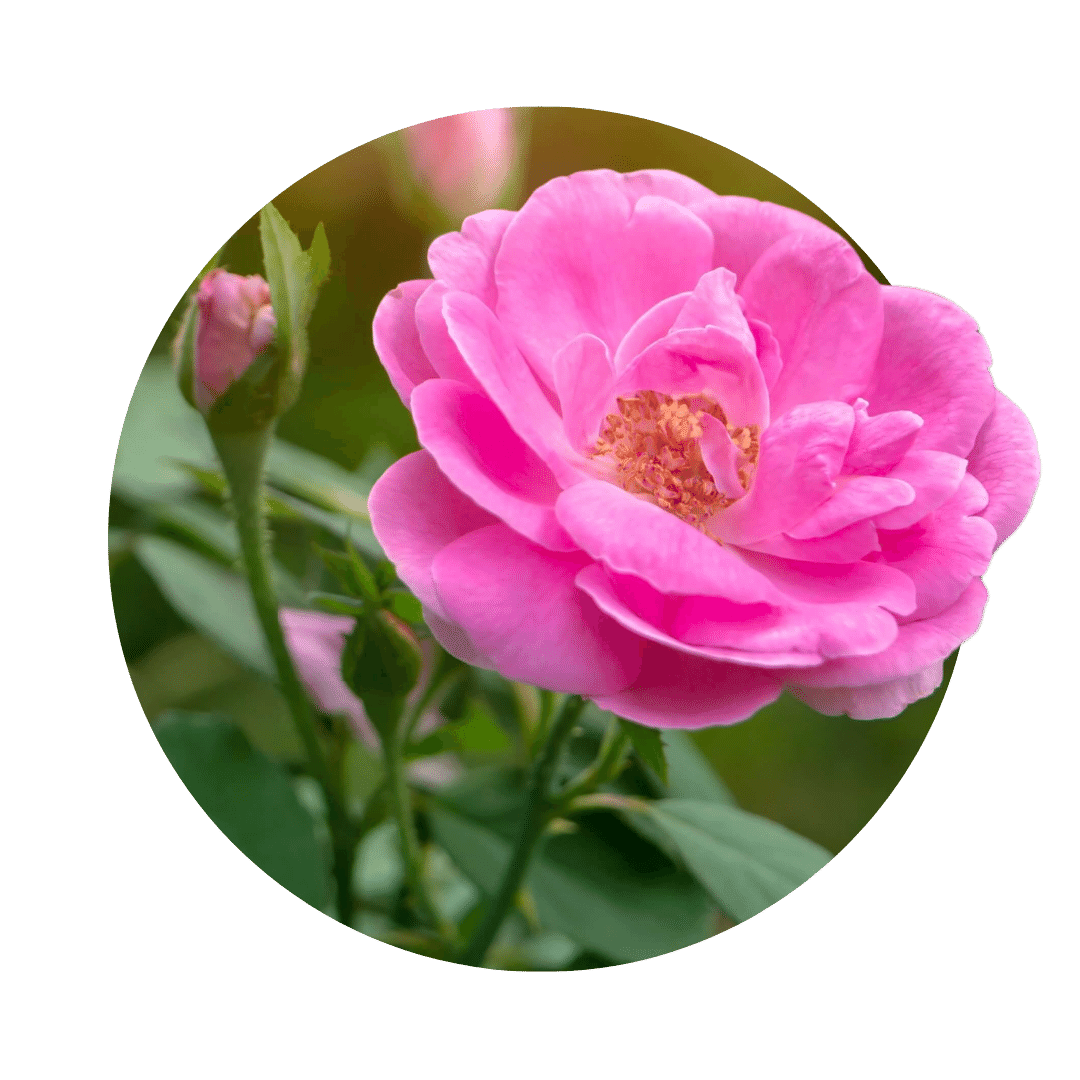Mistletoe: The medicinal plant with magic power
Mistletoe is a plant that has a long history with us. Mistletoe already had a special meaning for the Celts and the Asterix comics remind us of it even today. The druid Getafix brewed his famous magic potion with the help of mistletoe, which had to be cut with a golden sickle. Of course, he only used mistletoe from the oak tree, because it makes you particularly strong.
This medicinal plant is considered a giver of strength, it supports us in the difficult phases of life and brings heavenly light and energy back into the body. Even if this description sounds a bit fairy tale, this plant is really special and shows it by its appearance and way of life.
Mistletoe facts
Did you know that...
...mistletoe hangs like a ball in the trees?
...mistletoe used therapeutically has different strengths depending on which tree it grew in?
...mistletoe is a sacred plant of the Christmas season?
What is mistletoe?
Mistletoe is a hemiparasite. This means that although mistletoe itself photosynthesizes in order to feed itself, since it has no contact with the soil, it extracts water and nutrients from the host tree. In the way the plant fills its biological niche, much of its therapeutic application was recognized. It comes from the sky through the air to the host tree, infests it, depletes it, and yet leads a life of its own. One recognized in it a fateful meeting, as one finds it e.g. in the cancer illness of humans again. Mistletoe also likes to settle on already weakened trees, which stand in special places. Be it extraordinary landscapes or humid areas with high humidity like river courses. It forms a ball-like network of branches on which white, round berries are formed. These formations are most visible in autumn and winter, when the trees lose their foliage, while mistletoe is evergreen. A sign of strong vital forces and the reason to consider it special since ancient times.
General and healing properties of mistletoe
Immune boosting
Mistletoe is immune-enhancing. It stimulates the body to activate its non-specific defenses. As a result, one is better protected against infections. It also promotes the suicide program of degenerated cells, which is used in cancer.
Blood pressure regulating
Mistletoe regulates blood pressure. It can be used for both high and low blood pressure. It harmonizes blood pressure and stabilizes it in the range that is ideal for the organism.
Vitalizing
Mistletoe is vitalizing. Its immune-enhancing effect and its stimulating power are perceived as beneficial. That is why it is used as a source of strength in phases of weakness and fatigue.
Viscum album: Ingredients
The diverse active ingredients of this plant also result in different application focuses. Mainly it is about the immune system and blood pressure regulation.
You can find the following ingredients in this medicinal plant:
- Lectins
- Polypeptides a.o. Viscotoxins
- Flavonoids
- Lignans
- Biogenic amines
Mistletoe: effect for body and mind
Mistletoe is a stimulating plant. The berries of mistletoe contain various active ingredients that have a stimulating effect on the immune system. Mistletoe preparations are administered both internally as drops or tablets or by injection as an extract from the mistletoe berries. When taken internally, a harmonizing effect on blood pressure and circulation is observed. Apparently, the tone of the vessels is adjusted so that neither high nor low pressure occurs. It also has a positive effect on the immune system when taken internally. It helps to overcome infections faster. The injection is about irritating and stimulating the immune system. This is reflected in an increase in body temperature and leukocytes, or white blood cells. These represent the non-specific defense, which acts in the body against infections and also cancers.
Mistletoe properties
- Immune boosting
- Antidiabetic
- Blood pressure regulating
- Circulation stabilizing
- Anti-dizziness
- Metabolism stimulating
Fields of application in naturopathy
Mistletoe has a long list of issues where its use should be considered and where it has been shown to be effective.
Mistletoe for hypertension
High blood pressure is often an issue that is directly linked to points such as arteriosclerosis or high tone of the blood vessels. Mistletoe has a positive influence here and is therefore often used in mixed preparations or as a tea. It balances blood pressure to a normal level and at the same time combats any signs of arteriosclerosis. The deposits in the vessels are loosened, the blood can flow freely again and the blood pressure drops.
Viscum album for diabetes
From a naturopathic point of view, type 2 diabetes is an overload of the digestive system. This can be caused by too much food or by a weak digestion (mostly genetic component). The result is hyperglycemia of the organism with damage to nerves and tissues, inflammation and poorly healing wounds. Mistletoe strongly stimulates the cells and their metabolism, so that with certain dietary assistance the sugar level can decrease again and the cells can fight against the sugar-induced effects. The result is a systemic regeneration with a relaxation of diabetes type 2. Mistletoe is usually used here mixed with other plants in combination preparations.
Mistletoe for fever
When you have a severe infection, a slightly elevated temperature can help you overcome the infection better. The body increases the temperature physiologically to allow enzymatic and immunological processes to run more smoothly. However, the temperature should not go too high. From 39.5 degrees, one should become cautious. However, some people never have temperature increases and have a harder time overcoming infections. In this case, a controlled intake of mistletoe can help, as it activates the immune system and the body temperature rises. This increased temperature is desired and welcome in that case.
Viscum album for epilepsy
Epilepsy is a disease in which some areas or the whole brain are overstimulated. The cause is very low stimulus thresholds of the central nervous system. As a result, seizures occur in which the affected person is usually mentally absent and all muscles twitch convulsively. Mistletoe seems to strengthen the nerves and thus raise their stimulus threshold, so that the nerves can no longer be overstimulated so quickly. The epilepsy recedes and the events relax.
Mistletoe for joint problems
Many people have problems with their joints as they get older. It pinches and twinges when they start up, and the joint no longer seems to be sufficiently lubricated. The reason for this is osteoarthritis, a disease in which the metabolism in the joint decreases. The result is that the joint becomes stiffer and always stings when cold. Mistletoe now irritates the serous membranes in the joint, promotes blood circulation and ultimately the production of synovial fluid. The tarnishing now no longer stings and the arthritic degeneration of the joint is slowed down.
Viscum album for constipation
Mistletoe is considered to aid digestion and stimulates all digestive glands to produce their secretions and pour them into the intestines. As a result of the digestive glands releasing a lot of substance into the intestine, digestion in the intestine can proceed better and constipation can be relieved. The person can go to the toilet better again and the pressure decreases.
Notes on the use of mistletoe
Mistletoe is taken internally as a component of ready-made mixed preparations or as a cold tea extract, since here the concentration of toxic viscotoxins is lowest and harmless.
Otherwise, the medicinal plant is usually injected by syringe as an immunostimulant drug. This can be done intravenously or intracutaneously, depending on the preparation. Mistletoe immunotherapies are mostly done by injection every few days.
Mistletoe during pregnancy & lactation
Mistletoe should not be taken during pregnancy and lactation because immune reactions and viscotoxins could be harmful to the foetus.
Viscum album for chronic progressive infections
Mistletoe should also be avoided in cases of chronic progressive infections.
Mistletoe for primary brain or spinal cord tumors
In the case of tumors on the brain or spinal cord, there is a possibility that the immune reaction caused by mistletoe may result in swelling with an increase in intracranial pressure. This increase in intracranial pressure would be an absolute emergency and must be avoided.
Viscum album for existing fever
If fever is already present, mistletoe should not be used, as overstimulation may result, causing the fever to rise uncontrollably.
Discover our sprays
With natural methods such as the individual spagyric sprays from Zimply Natural, complaints can be treated and sustainably alleviated.
Use the healing power of mistletoe!
Use the healing power of mistletoe and our other 100 medicinal plants for the natural relief of your ailments. Improve your well-being and support your body, mind and soul! Use our configurator to put together your personal spagyric spray, which is tailored to your needs and accompanies you on your natural path to the improvement of body, mind and soul.

